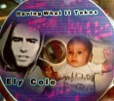Illustrious Raitts
----------
The Notorious
More notorious than illustrious was Sir Alexander Gervaise de Raite (Rathe) who murdered Andrew Calder, 4th Thane of Cawdor, by the the water dam of Raite in 1405. The lands of Raite, in Nairn, Inverness and Moray, including Rait Castle, were seized by the Crown and given to the Thane of Calder's heir, Donald, in consideration of his father's murder. Sir Alexander fled to the Mearns (Kincardineshire) and established himself there, taking possession of Hallgreen Castle (see under Raitt residences). His enforced move of abode meant that the Rait name disappeared from Moray at that time; however, all Rait(t)s in the Mearns, Angus (as well as probably those a bit further North in Aberdeenshire) are reputed to be descended from Sir Alexander and his offspring.
The villain was a descendent of the old barons of Rait. Sir Gervaise de Rathe (Knight) was the constable of Invernairn in 1292, and when, in 1296, King Edward I summoned the Scottish barons to take the oath of fealty, Gervaise was among those who bore arms. His younger brother, Sir Andrew de Rathe (died after 1304), who also swore fealty in 1296 (as did a Roger de Rathe), was a member of Edward I's household in the earlier part of his reign and inherited all his brother’s lands in 1297 by commitment of the king. Another putative relative, Sir Alexander de Rathe was killed at the Battle of Crécy in Northern France in 1346. (See also under Raitt Coats of Arms)
----------
The Civil Servants
Alexander Rait was entered as a burgess of Dundee on 11th August 1677, being then apprentice to John Man, merchant. In 1680 he entered the Town Council, and was Bailie in 1681. In 1686 James II repeated the attempt which his predecessors had several times made to obtain control of the burghs by appointing the magistrates. He sent a Royal Warrant before the election in September 1686 directing the Council to appoint the civic officials whom he named. James Fletcher was the Provost by the choice of the Council, and he refused to implement the warrant, protesting the freedom of the burgesses to choose their own representatives. On 2nd December 1686 the King renewed his warrant, and named Alexander Rait as Provost, filling up all the other offices with his own nominees. No attention was paid to this encroachment upon the privileges of the burgh, and a third attempt was later made by the King to accomplish his purpose. Like many other Dundee merchants, Alexander Rait was a subscriber to the ill-fated Darien Scheme in 1696, having contributed £100.
Alexander Raitt was the secretary to John Erskine, the 6th Earl of Mar, from 1703 until his death in 1728. Although he owned extensive estates including in Mar, the Earl's home in Scotland was Alloa House, where Alexander was based outside his stints in London. In 1715, the Earl of Mar was the leader of the First Jacobite Rebellion which was put down. Mar subsequently retired to Paris, France, but Alexander remained in the family employ. A separate page is devoted to Alexander Raitt’s biography - and see also the blog entry for the Stuart Papers.
John Raitt was Sheriff of Anne Arundel County, Maryland, USA from 1755-1757 and one-time armourer for the Province of Maryland. He was also a merchant, selling European and East Indian goods from home. From 1745-1748, he was the Maryland Provincial Agent in England. (More about this John Raitt can be found in the Raitt Anecdotes and under Other Raitt Coats of Arms). Although John Raitt died in 1758, his descendants are alive and well!
The Record of Services of The Honourable East India Company's Civil Servants in the Madras Presidency from 1741-1858 show that Charles Raitt was a Writer there in 1763, becoming Factor in 1768. There is no trace of him after 1768.
----------
The Military
The Raits of Anniston unfortunately died out because of their fall in battle. Throughout history there have been soldiers, sailors and marines, as well as the occasional airman who have borne the name Raitt/Rait, many of whom have risen through the ranks and been highly decorated. Since I have now come across quite a large number of military Raitts, then I have created a separate page for their exploits.
----------
The Academics
Of the house of Rait of Hallgreen, David Rait was Principal of King’s College, Old Aberdeen from 1592-1632 and was made Doctor of Divinity about 1620. He died around 1632. In 1636, Andrew Raitt was mentioned as heir to his father David Raitt, Principle of King’s College, Old Aberdeen - but although he married Elizabeth Allardice in 1592, it is recorded that they had not children. James Rait, who was regent of the College Of Aberdeen from 1610-1611, and later minister of Aberluthnot, was probably a brother of David's, not a son. Most of the Raitts who entered the church were highly educated - either at Kings’ College, Aberdeen or St. Andrew’s University. Alexander Rait was appointed Professor of Mathematics at King’s College, Aberdeen in 1732 (see Raitt Anecdotes).
Sir Robert Sangster Rait (1874-1936) was Professor of Scottish History and Literature at Glasgow University from 1913-1930, and Principal there from 1929-1936. He was born in Narborough, Leicestershire, the son of Customs and Excise civil servant David Rait and Elizabeth Sangster Anderson, both from Aberdeen, to where the family later returned. Sir Robert graduated from King's College, Aberdeen in 1894 with an MA, later obtaining a First in Modern History from New College, Oxford where he became a Fellow in 1900. Soon after his appointment to the Glasgow University chair, he served in the War Trade Intelligence Department of the Foreign Office during the First World War, and was awarded a CBE (Commander of the British Empire). Professor Rait was Historiographer Royal for Scotland from 1919-1929, and from 1932 was Chairman of the National Library of Scotland. He was awarded an LLD (Doctor of Laws) by the University in 1930 and was knighted in 1933.
It’s not everyday that surface features (well, two are actually underwater) are named after members of the Raitt family. There is Raitt’s Hill in Eliot, York County, Maine which is named after one of the early residents of the settlement at Kittery (see Maine Raitts). Rait Narrows are to be found in British Columbia And there are two features named for geophysicist Dr Russell Watson Raitt (1907-1995). Russell was a major figure in the development and shipboard employment of seismic methods to study the Earth’s crust and between 1949 and 1985 he undertook extensive and classic studies in the Indian Ocean as well as the entire Pacific. Raitt Seamount in the North Pacific Ocean is named for him, as is Raitt Rise in the Indian Ocean. (He is descended from the Bovina Raitts who emigrated from Angus in 1817.)
However, it transpires that Russell Raitt’s wife, Helen Raitt (1905-1976) sailed across the Pacific Ocean in 1952–1953 on Scripps vessels with her husband. She goes down in history as the first woman to undertake such an extended oceanographic expedition. Inspired this voyage, she wrote a book a few years later entitled “Exploring the Deep Pacific” detailing the story of the expedition for the scientists' wives. Helen (born Hill) was involved in volunteer work and a number of fundraising and cultural activities. During her trip, as a consultant for the National Research Council on "Problems of the Underwater Swimmer in the South Pacific", she interviewed Pacific Islanders on local techniques and hazards of swimming and diving. She also fell in love with the music, language, and culture of Tonga and later undertook projects to help Tongans gain access to books or pictures about their own history.
----------
The Clergy
Many of the cadets and offspring of the Raits of Hallgreen, as well as Pitforthy became ministers and clearly, particularly in the diocese of Brechin, Angus, the Reverend Raitts lived in interesting times – often being driven from their churches, prosecuted, fined and deprived of their living for not praying for an English king or supporting the Jacobite cause. Since there are a rather large number of these men of the cloth, I have dedicated a separate page to them and included some information about the religious upheavals of the times. There are also some modern American Raitt ministers included there too at the bottom.
----------
The Grantees
Several Raitts were granted lands by charter from various monarchs in early history. Equally their lands were subsequently disbursed just as often it seems.
On 28 Aug 1296 at Berwick-on-Tweed, Gervays Rathe del counte de Innerauryn, paid homage to King Edward I along with his brother Andreu de Rat knight del counte de Innernay and Roger de Rathe of Ayrshire. Sir Andrew de Rathe was the subject of several letters to the King asking him to give credence to Sir Andrew’s accounts regarding insurrections. Probably because of this (and possibly the death of Gervase) on 11 June 1297, the King signified that he had committed to his liege Andrew Rate all the lands of Gervase Rate his brother in Scotland, presently in the King's hand.
In the book published in 1798 and lengthily entitled “An index, drawn up about the year 1629, of many records of charters, granted by the different sovereigns of Scotland between the years 1309 and 1413, most of which records have been long missing. With an introduction, giving a state, founded on authentic documents still preserved, of the ancient records of Scotland, which were in that kingdom in the year 1292. To which is subjoined, indexes of the persons and places mentioned in those charters ..”, mention is made of several charters granted by King David II (1324-1371) and his succeeding nephew King Robert II (1316-1390) as well as the latter’s son King Robert III (c1337-1406). Different spellings were used at various times for both the names of the grantees as well as the lands conveyed.
David II granted charters to Thomas Rait, of the Barony of Ureeis, in vic; Andrew Rait, burgess of Edr (Edinburgh); and Robert Bruce, of the lands of Rate, in vicecom de Perth.
Thomas Rait was the shield bearer of King David II (in ancient times, a scutifer or shield bearer was usually a lightly armoured soldier who often accompanied a soldier of a higher rank into battle with a protective shield). The records relate how David II twice visited Kincardine and in January 1338 he gave, among other grants a confirmation charter of the lands of Uris in the Mearns (Kincardineshire) to his shield bearer, Thomas of Rait. He also gave him the territory of Balgillachy in vic. de Forfar in October 1369.
In another record it is stated that Sir Duncan Wallace resigned the lands of Ures or Oures, in Kincardineshire, which were on 3 May 1370 granted by David II to Thomas de Rate.
For his part Robert II (son of Marjorie Bruce, a daughter of King Robert I, and Walter the 6th High Steward of Scotland and the founder of the Stewart dynasty) in the fifth year of his reign (1376), granted a charter to Thomas de Rate of the barony of Oures in Kincardine upon the resignation of Matthew de Eychles This was reconfirmed the same year. At the same time another charter was granted to him of the other half of the said barony of Oures on the resignation of Duncan Walays.
In another document, Dunottar was acquired by Matthew of Gloucester in 1333, but he was afterwards forfeited and about the year 1341 Rait of Uras, who was the king’s shield bearer, acquired a certain portion of the property, becoming a large proprietor inthe Mearns. In the seventh Roll of Royal Charters, Charter 4 in the twelfth year (1383) of the reign of King Robert II states “Carta to Thomas de Rate, of the lands of Ures, Clathok, Hiltoun, and Katerlyne, the brewhouse of Denhouse, Lumgerr, the miln of Dunnotter, and part of the lands of Dunnotter, whilk Matthew de Glacefter forisfecit”.
Furthermore, as early as 1378, it appears that Thomas de Rait of Owres in the Mearns, had a confirmation charter of at least a portion of the lands of David de Arrat in the parish of Brechin, from Margaret, daughter and heiress of David Barclay of Brechin. Robert II confirmed this charter granted by Walter Stewart, a son of the king’s, and Margaret his spouse, daughter and heir of David de Barclay of Brechin, to Thomas Raite, Domino de Ouvres, of the half lands of Arroch, in the barony of Brechyn, vicecom. de Forfar. The style of the charter confirmed is particular. It is dated at Scone, in plena parliamento Domini Regis, held there 19th October 1378, the 8th year of the reign of King Robert II. The original charter has been authenticated by the seals of the Queen and of John Earl of Carrick, as well as by the seals of Walter Stewart and his wife.
In the seventh Roll of Royal Charters, Charter 14 in the twelfth year (1383) of Robert II’s reign conveys to “James Stewart, gotten betwixt the King and Marion Cardny, the lands of Rate.” In the ninth Roll, in the 19th year of Robert II’s reign (1390) a charter was given to “Alexander de Lindsay, of the superioritie of Ourcs, of Lumgerr, and of Hiltoun, in vic. Kincardineshire, and Balgillow, in Forfarshire, which had belonged to Thomas de Rate.”
Robert Bruce, tenth of the name, son of King Robert Bruce, was created (fourth) Earl of Ross by his elder half-brother, King David II. He was killed at the battle of Dupplin on 11 August 1332. His son, Robert Bruce, eleventh of the name, is on record as having received the castle and manor of Clackmannan and other lands from King David II., the charter being dated 9 December 1359. In January 1369, Sir Robert Bruce of Clackmannan, and the lawful heirs-male of his body, received a charter from King David II under the great seal, of the lands of Rait in the Sheriffdom of Perthshire. In both charters Robert Bruce of Rait is called the King’s beloved cousin. His son, Robert Bruce, twelfth of the name, and the second baron of Clackmannan received in 1393 the lands and castle of Rait or Raith by charter from King Robert Bruce III. His eldest son, David Bruce, third baron of Clackmannan, received a charter to the lands of Rate in Perth from King Robert III. However a later Charter from King Robert III conveyed to John de Weemes, Knight, of the lands of Rires, and all others which he holds of the Earl of Fife, in the barony of Rires; the lands of Myrcarny….. conveyed to John de Wemys, Knight, grandfather of said John; and likewise the lands of Rate…conveyed by… [three] Knights, to said John de Wemys.
David Rait of Drumnagair had Hall Green confirmed to him by a charter from James III in 1478.
The King was not the only one, it seems, who could dispose of lands. In 1491, the seal of Alexander Blair of Balthyock was appended to Sasine of a rig of land in the barony of Rait,in Perthshire. In 1503 a charter was sealed by G. Ogilvy of Geddes, son and apparent heir of Sir Walter Ogilvy of Boyn, in favour of his brother-german, William Ogilvy, of the lands of Geddes and Rait, in Nairnshire. In 1555 a charted was sealed by Thomas Menzies in favour of John Cawdor {Campbell) as heir to his father, Archibald Cawdor, in the lands of Geddes and Rait. In 1586, the seal of Alexander Dunbar, Dean of Moray, was appended to Tack to John Campbell of Cawdor, of the teind-sheaves of the lands of Rait and Geddes.
----------
The Entertainers
John Emmett Raitt (1917 – 2005) was an American actor and singer best known for his performances in stage musicals such as Carousel, Oklahoma and The Pyjama Game. The latter was made into a motion picture in 1957 in which he co-starred with Doris Day. The same year he made a television version of Annie Get Your Gun. He was born in Santa Ana, California of Scottish ancestry (he wrote to my uncle in Glasgow many years back in an effort to discover his Scottish links). In 1945, he was one of the recipients of the first Theatre World Award for his debut performance in Carousel. In 1981, having recently divorced from his second wife, he married his widowed high school sweetheart. He made a cameo appearance in 1996 in one of the first episodes of 3rd Rock from the Sun in which he sang part of the title song from Oklahoma. He has a star on the Hollywood Walk of Fame for Live Theatre. He died in 2005 in Pacific Palisades, California, from complications due to pneumonia, aged 88.
Bonnie Lynn Raitt was born in Burbank, California in November 1949, the daughter of John Raitt by his first wife Marjorie Haydock, herself a pianist and singer. Bonnie started playing a guitar at the age of eight, later becoming famous for her unique style. A singer-songwriter with a long series of hits and nine Grammy Awards, Bonnie was influenced by blues, rock, folk and country, with some of her best known recordings including Nick of Time, Something to Talk About, Love Sneakin' Up on You, and I Can't Make You Love Me. Her second album Give it Up released in 1972, on which she played the bottleneck and twelve-stringed guitars associated with her, is reckoned to be her best by many. Her latest (18th) album is called Souls Alike. In March 2000, she was inducted into the Rock and Roll Hall of Fame. A lifelong activist, she is a founding member of Musicians United for Safe Energy.
David John Raitt is one of two sons of John Raitt by his first wife and is a musician in his own right, although he has appeared onstage with his sister Bonnie from time to time serving as a bass player. He moved to Mendocino, California in 1972 where he quickly became involved in the local music scene playing in clubs and area bands. He is the lead singer, guitarist and song-writer with the New Mendocino All-Stars based in northern California. Although he sometimes tours with his sister - usually as her harmonica player, David also runs a yurt-building business. In 1994 he assembled an ecological benefit album called Edge of the Forest, which also features his sister. His first solo album, Take a Chance, was released in 1996.
Ely Cole Raitt, son of David John Raitt and born in 1993, is also a successful musician following his father’s footsteps. He went to the Idyllwild Arts Academy in California, then studied songwriting and performance at Berklee College of Music in Boston, Massachusetts. In 2011, when he was 17 years old, as Ely Cole he recorded, engineered and printed his CD “Debut” at his father’s Villa De Faro Studio in Baja, California. A talented songwriter/singer, Ely has toured with his father and the Baja Boogie band and has performed solo on many occasions. As Ely Raitt he released the soulful Ms Marlow in 2016 and then moved on to freestyle, releasing Ely Raitt aka Lil Angeles “Broken Gla$$e$” in 2018. Ely has also made several short film videos, and as Elijah Rathe he released “Inside Outside” in 2020. Interestingly, he would like to write a song about Rait Castle!
David’s elder brother Steven James Raitt was also a singer as well as a sound engineer, well-known in the music scene in the twin cities of Minneapolis-Saint Paul. Although growing up in Los Angeles, he moved to the Twin Cities in 1971 when sister Bonnie recorded her first Warner Bros album there. He co-founded T.C. Jammers, but in the 1990s he began a career designing state-of the art home entertainment systems. He moved back to Sacremento, California around 2006, but died of brain cancer in 2009 after an eight year battle.
At the age of 11, John's nephew Donovan Emmett Raitt fell in love with the electric guitar and started taking lessons. Unaware of his family's history with the electric guitar (his cousina include Grammy winning blues guitarist Bonnie Raitt and her brothers), he started to perform regularly in a wide variety of styles, doing his first professional gig at the age of 15. He was the recipient of the Paul LaRose memorial scholarship for guitar and after graduating in 2005, Donovan has been active as a professional musician in the Southern California area, with several recording and live credits. In 2007 he started teaching in the music department of Concordia University Irvine, and currently serves as adjunct professor of Guitar and Music Technology and Worship Arts. Donovan has also served on the music faculty at Concordia University in Seward, Nebraska, where he taught online courses and lessons in Guitar and Worship Arts. Church music has been a central focus of Donovan's career and he has worked and performed at several churches in California. Active as a educator and having written and published guitar lessons for various online sites as well as a guitar method book, Donovan fell in love with fingerstyle guitar, and began writing his own solo guitar compositions, releasing his first CD of original fingerstyle guitar music entitled Strategic Tension in 2013. In 2013, Donovan released Guitar Hymns Vol. 1, an EP of hymn arrangements for solo guitar.
(My early blog entry contained some preliminary ancestry of this family. But I have now added a separate page - the Bovina Raitts - which covers the arrival of their ancestors from Scotland in 1817 and their subsequent dispersion throughout America. Another new page proving much additional information has been created for John Raitt and his father and brother.)
----------
The Surgeons
The following data is extracted from the Historical and Biographical Record of Douglas County, Illinois.
James Lee Reat, M. D., one of the most distinguished physicians and surgeons of Douglas County, Illinois, was born in Fairfield County, Ohio, January 26, 1824. His Reat ancestors are traced back to Scotland, where the name was pronounced in two syllables, with the accent on the last. Two brothers emigrated to this country during the war of the Revolution, one of whom (James, 1739-1823) espoused the cause of the rebels, the term by which the patriot colonies were then known, and served through that struggle with Washington's forces. The other brother sided with the Tories, in consequence of which the two brothers became alienated and a total separation occurred between the two branches of the family. Dr. Reat is descended from the one who cast his fortunes with those of the patriots and who, after the war, settled in Frederick Town, Maryland. At this place James Reat (James Lee’s father) was born and subsequently found his way to Ohio, where he married Susanna Rogers, a Virginia lady, and with her settled in Fairfield County, Ohio. When James Lee was five years old, his parents moved to Coles County, Illinois, where the father purchased a farm on which they resided for a time, then moved to Charleston and lived there up to the time of his death.
James Lee received a good education at the seminary at Charleston before undertaking studies at the Medical College at Cincinnati, from where he graduated in 1858. He later attended the Rush Medical College at Chicago. After leaving college, he was engaged for a time in the drug business at Charleston, but soon sold his interests and in 1859 took up his residence at Tuscola. In the fall of 1862 he received an appointment as assistant surgeon in the war of the Rebellion and was assigned to a post at Louisville, where he remained for some time in charge of a hospital. On March 1, of the same year, he was commissioned first assistant surgeon of the Twenty-first Regiment Infantry (Grant's old regiment). On July '22, 1864, he was promoted surgeon of the regiment. He returned to Springfield at the close of the war and was mustered out in January 1866. He then returned to Tuscola and resumed his regular practice.
In 1861 he was married to Miss Sallie C. Callaway, of Jacksonville, born in Kentucky, the daughter of the Rev. S. T. Callaway, a Baptist clergyman. The couple had three surviving children: Lois, the wife of Hon. Theodore Brantley, Chief Justice of the Supreme Court of Montana; Samuel Callaway, proprietor and editor of the Tuscola Journal and later United States Consul in Tamsui, Formosa.; and Fred, proprietor of the Tuscola Republican.
Dr. Reat was a member of the Military Loyal Legion of the United States and the Illinois Army and Navy Medical Association. He was the Pension Examiner for twenty years starting in 1987 and for three years he was clerk of the Board of Education of Tuscola and while occupying that office took deep interest in the erection of a public school building, which is suprpassed by few in this section of the state. James Lee Reat dieds in Tuscola in 1921.
For additional details see Douglas County Civil War Veterans Personal Histories, p83
Oswald Raitt was born in Nairn, Scotland on 25 February 1871 to William Raitt and Grace McGregor. He qualified as an M.B., Master Surgeon in 1896 at the University of Edinburgh and was registered on 26 October 1896. He became a military doctor and saw service as a Civil Surgeon from 1899-1902 in South Africa in the midst of the Second Boer War. He was entitled to the Queen’s South Africa Medal as well as the Cape Colony clasp and the date clasps for at least 1901 and 1902.
In the 1903 Medical Register his address is given as Civil Surgeon, Field Force, South Africa - but in that year, he was sent to Nicaragua by the British government to help fight an epidemic, in collaboration with the Army of Nicaragua. In the 1911 Medical Register his address is given as La Leonesa Mines, Matagalpa, Nicaragua, Central America. Full details of Oswald and his family can be found on the Nicaraguan Raitts page.
William Rait, born in Dundee in 1718, son of physician Dr George Rait of Anniston, was a surgeon in Prince Charles Edward Stuart's LifeGuards and was present at the Battle of Culloden in 1746. The details pieced together can be found on the William Reat - Jacobite Surgeon page.
The Craftsmen
The Marchmont or St Ronan's Arrow was the prize at an archery competition held from 1830-1844 at the St Ronan's Border Games at Innerleithen, Peebles-shire (now Tweeddale). The Arrow – a realistic representation of a real arrow - was made by the Edinburgh silversmith William Cunningham in 1830. The winner of the Arrow was entitled to add a medal to the trophy (at his own expense – so not all did). In 1842 the winner was William Steuart from Groynynogin in North Wales and the medal he commissioned was made by David Crighton Rait (see also under Raitt Coats of Arms).
Rait was admitted to the Incorporation of Hammermen of Glasgow as a goldsmith and jeweller on 31 August 1832, when his essay was a plain gold ring. He seems, however, to have been in business before this date, as two earlier items with his mark are known: a lemon strainer dated 1827 and a punch ladle of 1828. when his business address was in Glasgow, although he also had a clientele in Edinburgh. Born in 1796 in Largo, Fife, he registered marks in Glasgow in 1822 and in Edinburgh in 1844, though in the 1841 census he seems to have been working in Kilbride on the island of Bute. By 1851, however, he was in Glasgow at 34 Buchanan Street. He sent a name punch to be recorded at Edinburgh Assay Office in 1864.
A prolific craftsman, he produced a considerable number of sporting medals, including ones for the Fairywell Curling Club, St Quivox, in 1846-7, and the Ayr Curling Club in 1857. Between 1832 and 1863 Rait made 10 of the medals attached to the Kilwinning Arrow (another archery competition). He also made the gold medal presented by the 13th Earl of Eglinton to Kilwinning Bowling Club and was Medallist to the County Archery and Rifle Club for the West of Scotland in 1846. His mark is also on a silver spoon made in 1845 (at right).
The medal made by David Crighton Rait in 1842 for the Marchmont Arrow winner is described as follows:
Circular, reeded rim, suspension loop, free swivel ring. Diameter 33 mm.
Obv: Gained / by / William Steuart Esqr / of Glenormiston / Aug 1 1842 Rev: Crossed laurel branches, above them on a banner Pax Copia Virtus. Marks: King's head right in oval punch; DCR in rectangular punch, thistle.
The above is based on: The Marchmont or St Ronan's Arrow. By John Burnett & George R. Dalgleish. Proc. Soc. Antiq. Scot, 125 (1995), 1175-1186
The Edinburgh silvermaker’s mark for D. C. Rait & Son appears on a tea service for 1869 in Glasgow. And a Scottish late George IV silver mug, thistle shaped, with serpentine handle, flaring foot, chased and embossed with foliate lobes to base, and with foliate cartouche enclosing monogram, height. 4 in., approx. 5 troy oz. dated Glasgow, 1829, bears the name of D. C. Rait, maker.
David was also responsible for the silver mounts on a wonderful William IVth Scottish Black Watch Regiment (the 42nd Regiment of Foot) dirk described as having a polished 13 inch blade with a large and small fuller either side, the blade stamped with the makers name Stirling Glasgow, black stained bogwood hilt of Turkish knot design, with 76 silver pin decoration, the top with a cairngorm stone set in a silver band, the bottom of the hilt with a silver band decorated with thistles. The leather sheath containing the knife and fork en-suite with the hilt, and with four hallmarked silver fittings, the top mount with the Scottish bonnet and Red Hackle feather, two mounts with applied thistles and a mount with the cross of St Andrew, all mounts with engraved decoration and Glasgow hallmarks for 1832 and initials DCR (David Crichton Rait).
In fact, David’s younger brother Robert was also a silversmith. Robert Rait served his apprenticeship under James Muir and appears on the Incorporation of Edinburgh's Apprentice Register as from the 5th October 1818 (when he would have been aged only 11). Robert chose to seek his fortune in the USA arriving there in 1833. He was a silver smith, jeweller and retailer in New York City from 1833-1866 and is listed in the 1854 and 1856 NY City Directories as well as on tax rolls as late as 1866 at his business address at 261 Broadway. He had his own firm - Robert Rait & Co. - from 1835-1855. In the 1860 New York Census he is shown as a merchant, aged 50, and apparently not married or head of household, with an estimated worth of $50.000. He died in New York City on 1 February 1869. (See also under Scottish Raitts for family details.)
Robert's name is also found on a silver cake cutter/server acquired in New York in the mid-1800s.
Another Rait, almost certainly of the same family and possibly the above mentioned David himself or his son, was a partner in the silver and goldsmith firm of Smith & Rait active in Glasgow in the early 1900s at the address of 34 Buchanan Street - the same as that of David Rait. The firm advertized in the Post Office Annual Glasgow Directory for 1901-1902 (see below).
And these were not the only Raitts to be silversmiths. James Reat (1782-1815) was a prominent silversmith in partnership with Reuben Johnson (1782-1820) from 1804-1815 in Richmond, Virginia. In November 1805 they advertised as jewelers, silversmiths, and gilders and returned thanks for the liberal encouragement they received. In 1806 they advertised "spoons of their own manufacture." They also advertised for a number of apprentices. The company suffered a fire in 1809 and relocated. The firm continued until the death of James Reat. James also had a separate business under the name of James Reat & Co. from 1812-1815. His younger brother David Reat also became a silversmith and was apprenticed to the firm.
Two silver cream pots by Johnson & Reat dated 1805 and 1810 belonged to Thomas Jefferson and are in the Monticello collection. Other known items include a 7 inch ladle; silver sugar tongs with oval, plain nips and a fiddle handle, engraved "D"; a monogrammed coin silver spoon, circa 1805-1810, 9-1/2 inches in length; and a coin silver tea service, circa 1810-815.
James also found time to be in the local militia regiment and served several tours of duty, rising to the rank of Sergeant.
Further brief details on the family and descendants on James Reat can be found on the American Raitts page under Texas and Virginia, but because a recent book provides much interesting information on Virginia silversmiths, including James Reat, then a separate page on Virginia Reats has been created.
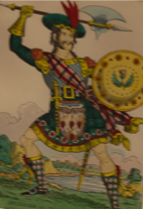


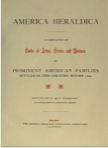
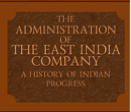
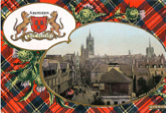
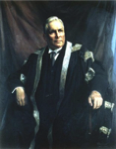
© Hunterian Museum & Art Gallery, University of Glasgow
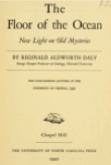


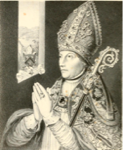
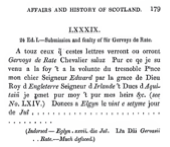
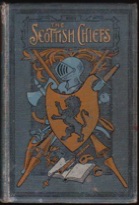
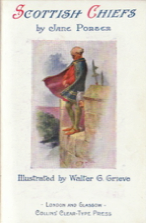
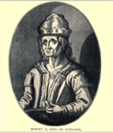
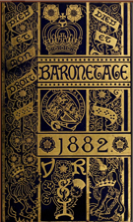
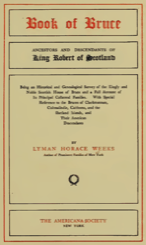
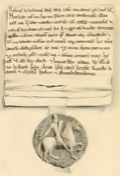
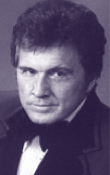

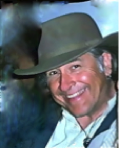


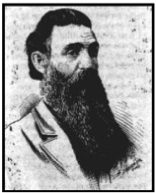
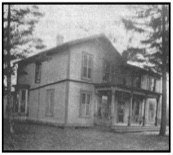
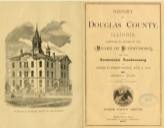
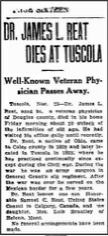
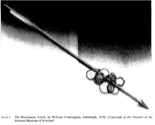
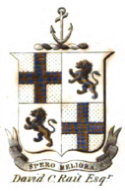


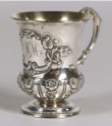


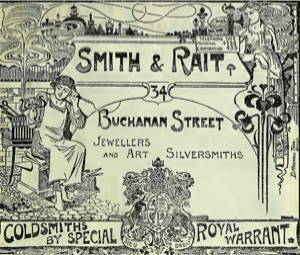
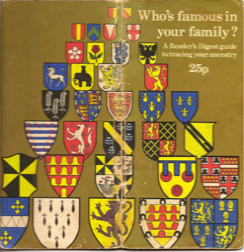
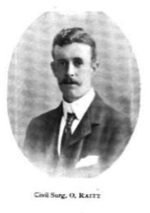
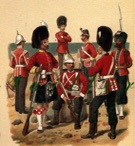
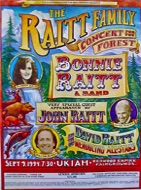


Although most of my Raitt and related ancestors apparently led fairly normal (for the time) lives, few seem to have made a real name for themselves and been recorded for posterity. True, several were sea captains, soldiers and speciality master craftsmen (blacksmiths, shoemakers, watchmakers, stone masons) but even their lives have passed unnoticed and unremembered in the main. The majority seem to have worked in the flax and linen industry around Arbroath and the others seem to have been farm labourers in Angus and Banffshire.
There are, however, a number of individuals bearing the Raitt name (in one form or another) whose careers and exploits have been recorded in earlier times and several of these are listed below. I have come across their names in various documents over time and doubtless there are many others who can be added to this page in due course. Because in certain occupations (e.g. church ministers or soldiers) there are a relatively large number of individuals, then I have elected to put their details on separate pages. Thus, biographies of some closer Raitt relatives are to be found on the page Pillars of Society and stories of other Raitts and relations are to be found on the Religious Raitts, Military Raitts and Raitt Anecdotes pages. The Gravestone inscriptions page also provide additional information, as does the page for Raitt Coats of Arms.
It is worth noting that it was expected a couple of centuries ago in Scotland as well as elsewhere that the eldest son would inherit the family estates, while one son would join the army and another would become educated and enter the Church - and the sons would often follow their fathers in the same profession. This is borne out with some of the individuals below.


